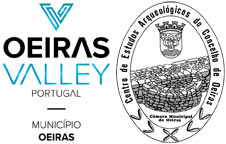Fenícios e Indígenas no território português: o estuário do Tejo como paradigma
Palavras-chave:
Iron Age, Tagus estuary, Phoenician language, Southwest graffitoResumo
The data which has been retrieved in the past two decades in the Portuguese territory have confirmed the relatively early date of the arrival of Phoenician communities in the western coasts of the Iberian Peninsula. Groups of western Phoenicians, probably originating in the áreas of Cádiz and Málaga, settled surely within the late second half of the eighth century b.c.e. in sites located first in the estuary of the Tagus and afterwards in those of the Mondego, Sado, Guadiana and Gilão. In the first space (the Tagus estuary), the density of sites is significant, and every indication suggests those sites functioned as a network following coordination models. Given the fact that the areas in question were occupied by indigenous populations, it seems that the establishment of deals and the undertaking of various types of negotiations between the autochthonous society and the new arrivals will have been indispensable. In the river mouth the Phoenician alphabet and language were used, a situation confirmed by the inscriptions founded in Lisbon and Almaraz. In the medium course of the river, however, a Southwest graffito showed the use of two different systems of writing, even if the archaeological materials, architectural features and construction techniques were the same.
Downloads
Publicado
Como Citar
Edição
Secção
Licença
Os artigos publicados são da exclusiva responsabilidade dos Autores.
É expressamente proibida a reprodução de quaisquer imagens sobre as quais
existam direitos de autor sem o prévio consentimento dos signatários dos artigos
respectivos.




